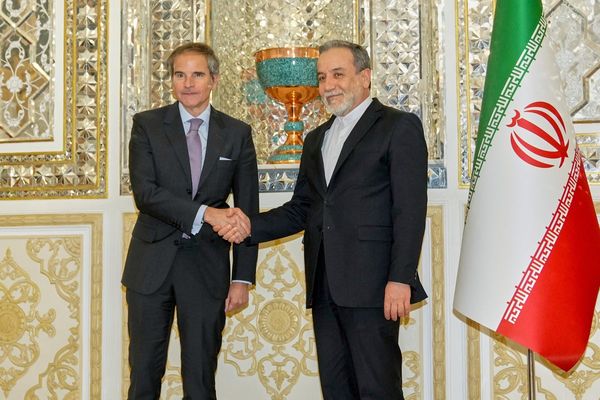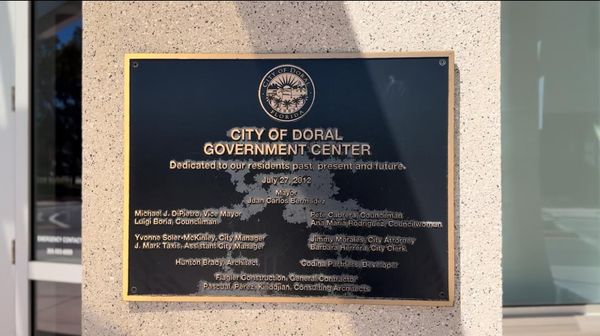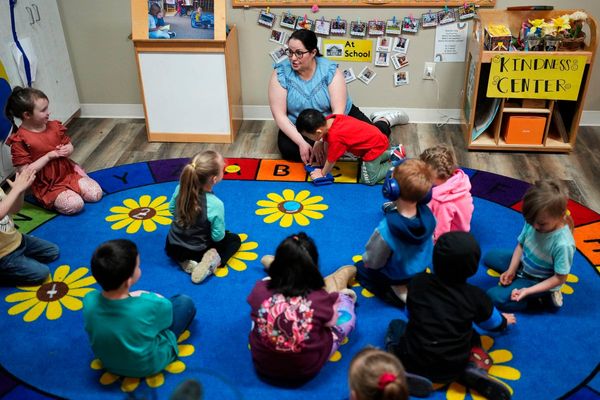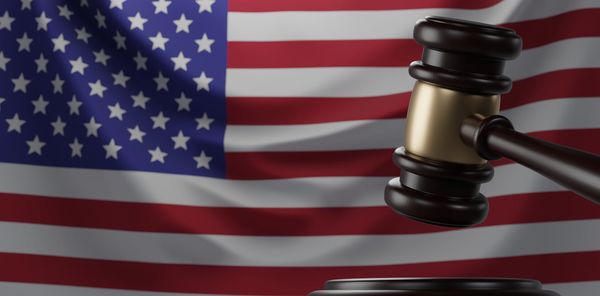President Donald Trump's effort to unilaterally wind down the United States Agency for International Development (USAID) has sparked a heated debate about the agency's role in pandemic response.
USAID's defenders cite its important role in researching viruses and responding to disease outbreaks. Department of Government Efficiency (DOGE) head Elon Musk, on the other hand, accused it of "[funding] bioweapon research, including COVID-19, that killed millions of people."
Did you know that USAID, using YOUR tax dollars, funded bioweapon research, including COVID-19, that killed millions of people? https://t.co/YVwyKA7ifs
— Elon Musk (@elonmusk) February 2, 2025
What is the truth?
In the case of the most recent pandemic at least, it's fair to say that USAID's pandemic prevention efforts were a failure. The agency's programs for predicting and stopping a global virus outbreak in the human population missed COVID-19.
Those same programs also directed millions of dollars in grant funding to the New York-based non-profit EcoHealth Alliance and its subgrantee, the Wuhan Institute of Virology (WIV)—two organizations that feature prominently in investigations into the possibility that COVID-19 was an engineered virus that escaped from a lab.
EcoHealth Alliance, its now-former president Peter Daszak, and WIV were all debarred from receiving federal funding during the Biden administration for failing to abide by restrictions and transparency requirements related to virological experiments they were conducting in Wuhan—where the COVID-19 outbreak started.
Those experiments involved collecting SARS-like coronavirus viruses in the field, from both animal and human sources, and then manipulating them in at WIV.
As I detailed in a story for Reason last year, some of those experiments resulted in the creation of hybrid viruses that were more transmissible and deadly in humans than their natural variants.
The National Institute of Allergy and Infectious Diseases (NIAID) funded those experiments in likely violation of the then-extant federal government pause on so-called "gain-of-function" research.
NIAID was not the only agency funding EcoHealth's work with WIV.
The organization was also a subgrantee on USAID's PREDICT program.
Between 2009 and 2019, USAID spent $210 million on the PREDICT program—which collected virus samples in numerous countries and shipped them off to dozens of labs for further research.
That includes WIV, which as of 2019 had over 11,000 virus samples from the PREDICT program in storage and under the supervision of Chinese scientists, according to public records obtained by news non-profit U.S. Right to Know and published in December 2024.
"These include samples from Yunnan Province, where coronaviruses closely related to SARS-CoV-2, the virus that causes COVID-19, circulate," wrote U.S. Right to Know reporter Emily Kopp.
The University of California Davis' One Health Institute was the primary grantee of the PREDICT program and included EcoHealth Alliance as one of its "core partners" and subgrantees.
PREDICT's approach to pandemic prevention was always controversial. The idea was that by collecting and cataloging thousands of animal viruses circulating in nature, scientists would be better able to predict which ones were most likely to leap from animals to humans.
With that knowledge, countermeasures for the next pandemic could be quickly spun up in the case of an outbreak.
As a 2021 article from The Intercept details, critics long charged this was an extremely ineffective approach. There was no way to reliably say which of the thousands of collected viruses would actually evolve into the next pandemic.
The same article reports that EcoHealth received $53 million from USAID from 2004 to 2022.
Dennis Carroll, PREDICT's designer, conceded to The Intercept that the program couldn't accurately "predict" the next viral outbreak and expressed some regret at naming the program PREDICT. He said the program's approach still had utility in forecasting where a viral outbreak was mostly likely to occur.
On COVID at least, even that forecasting goal appeared to fail. Despite partnering with WIV to store and research bat coronaviruses at the Wuhan lab, scientists failed to prevent a coronavirus pandemic from breaking out in their backyard.
As PREDICT was winding down, Daszak, Carroll, and Jonna Mazet, the PREDICT lead at U.C. California, Davis, used $1.3 million of PREDICT funds to travel and solicit financial support for a successor organization—the Global Virome Project (GVP).
That joint Chinese-American venture received funding from USAID until around the outbreak of COVID-19.
In addition to spotting the next viral outbreak, the principals of GVP also pitched their program to ensure valuable information sharing between U.S. and Chinese virological researchers.
"Absent [U.S. government] leadership in GVP agenda-setting, governance, and funding, the Chinese government could take a leading position in this potentially path-breaking endeavor undermining years of [U.S. government] leadership and considerable investment," reads a draft GVP funding pitch obtained by U.S. Right to Known. "Additionally limited access to the information gained through these efforts may have serious national security implications."
Chinese partners on the project were to make a similar case to their institutions.
Here too, the program appears to have failed.
Thousands of samples collected under the PREDICT program were left at WIV, and have never been publicly sequenced. WIV has rejected U.S. requests for lab notebooks and other information on the virological experiments performed there with the support of U.S. tax dollars.
The failure of WIV to be transparent about its U.S.-funded research was one reason that the federal government cited for debarring both WIV and EcoHealth (which had responsibility for overseeing the work of its subgrantee.)
As The Daily Caller noted in a piece published earlier this week, Daszak, in April 2020 also directed certain virus sequences collected under the PREDICT program to be excluded from a public database to avoid "unwelcome attention."
To be sure, no one has established any direct link between the USAID-funded work at Wuhan and the COVID-19 pandemic.
When testifying before Congress last year, former NIAID Director Anthony Fauci dismissed the idea that EcoHealth's experiments his agency funded could have possibly led to the creation of COVID because the viruses EcoHealth had reported working with were too genetically dissimilar to the one that caused the pandemic.
The rebuttal is that we just don't know all the viruses that scientists at Wuhan were working with.
Given the kinds of experiments the lab was performing with U.S. support, and its long history of lax biosafety precautions, the potential that COVID-19 originated there and leaked via a lab accident can't be ruled out.
The FBI, CIA, and Department of Energy all rank a lab accident as the more likely cause of the pandemic—albeit with low confidence.
Contra Musk's definitive statement that USAID was funding "bioweapons research," we don't definitively know the type of research that was being carried out at WIV.
As The Daily Caller article notes, however, there's not a bright dividing line between civilian research on pandemic viruses and research with some sort of military purpose.
Indeed, the federal government has been engaged in a decades-long effort to better regulate "dual-use research of concern"—with dual use referring to research that could produce both therapeutics and bioweapons.
That would include certain types of "gain-of-function" research (a hotly debated term itself) on potentially pandemic-causing viruses.
As with so much about the origins of COVID-19, there's much we still don't know. That includes much that we don't know about what U.S. tax dollars were underwriting at the WIV.
Musk can't say definitively that the U.S. was funding bioweapons research there. People should be circumspect about totally dismissing that possibility as well.
The post USAID-Funded Pandemic Research Failed To Spot COVID or Ensure Chinese Transparency appeared first on Reason.com.







